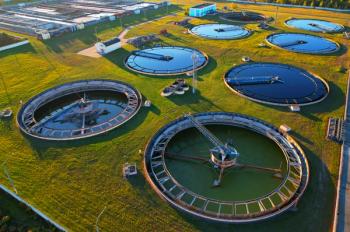
Retention Time Dataset for Heterogeneous Molecules in Reversed–Phase LC
A recent journal article provided an overview of a dataset that includes 10,000 experimental retention times, derived from 30 different reversed-phase liquid chromatography (LC) methods.
In a recent article published in Scientific Data (1), researchers provided details on the development of a comprehensive dataset comprising more than 10,000 experimental retention times, derived from 30 different reversed-phase liquid chromatography (LC) methods and pertaining to a collection of 343 small molecules representing a wide range of chemical structures. These chromatographic methods encompass common LC setups for studying the retention behavior of small molecules and offer a wide range of examples for modeling retention time with different LC setups.
LC-based separation aids in distinguishing isomeric and isobaric molecules, resulting in cleaner fragmentation spectra, and improves detection of low-abundance molecules by minimizing ionization competition (2), while chromatographic retention time (RT) provides crucial identification data, especially for molecules with indistinct mass or spectra but differing RTs (3). The use of RT in identification workflows, however, is often limited by the lack of reference standards as well as by the inconsistent RT across different chromatographic methods (CMs), thus affecting the availability of comprehensive datasets. Predicting RT for specific molecules within a given CM has become a popular alternative to (4-6) While in untargeted metabolomics, the use of quantitative structure−retention relationship (QSRR) strategies predicts RT for potential candidates, reducing false positives (7,8), past research has shown that the need for different QSRR models for different LC setups complicates this approach. (9-13).
To develop the database, researchers carefully selected the small molecules which made up their collection to represent various chemical classes and exhibit a wide range of physicochemical properties, effectively mimicking the diverse chemical space encountered in reverse–phase (RP) LC analyses. The CMs were then tailored to reflect common LC setups in untargeted analyses, incorporating different C18 columns, gradient profiles, mobile phases, and additives. The extensive molecular overlaps among the CMs in MCMRT make it easier to transfer machine learning models between different LC setups, thus enhancing their practical applicability in predicting RTs under various chromatographic conditions.
The authors stated that some of the molecules exhibited stable retention times across various mobile phases, while others displayed noticeable shifts, depending on the presence of specific additives such as formic acid or ammonium formate. This differentiation, they said, is crucial to understand the impact of chromatographic parameters on molecular retention and highlight the need for diverse experimental setups to capture a comprehensive range of retention behaviors. These findings emphasize the importance of their including a diverse array of molecules in the dataset to encompass multiple variations in RT and confirm the necessity of comprehensive datasets incorporating diverse molecular structures and chromatographic conditions to enhance the robustness and applicability of RT predictions.
References
1. Zhang, Y.: Liu, F.; Li, X.Q. et al. Retention Time Dataset for Heterogeneous Molecules in Reversed–Phase Liquid Chromatography. Sci. Data 2024, 11, 946. DOI:
2. Bouwmeester, R.; Martens, L.; Degroeve, S. Generalized Calibration Across Liquid Chromatography Setups for Generic Prediction of Small-Molecule Retention Times. Anal. Chem. 2020, 92, 6571–6578. DOI:
3. Haddad, P. R.; Taraji, M.; Szücs, R. Prediction of Analyte Retention Time in Liquid Chromatography. Anal. Chem. 2021, 93, 228–256. DOI:
4. Randazzo, G. M. et al. Prediction of Retention Time in Reversed-Phase Liquid Chromatography as a Tool for Steroid Identification. Anal. Chim. Acta 916, 8–16 (2016). DOI:
5. Creek, D. J. et al. Toward Global Metabolomics Analysis with Hydrophilic Interaction Liquid Chromatography-Mass Spectrometry: Improved Metabolite Identification by Retention Time Prediction Darren. Anal, Chem. 2011, 8703–8710. DOI:
6. Kern, S.; Fenner, K.; Singer, H. P.; Schwarzenbach, R. P.; Hollender, J. Identification of Transformation Products of Organic Contaminants in Natural Waters by Computer-Aided Prediction and High-Resolution Mass Spectrometry. Environ. Sci. Technol. 2009, 43, 7039–7046. DOI:
7. Aalizadeh, R.; Nika, M. C.; Thomaidis, N. S. Development and Application of Retention Time Prediction Models in the Suspect and Non-Target Screening of Emerging Contaminants. J. Hazard Mater. 2019, 363, 277–285. DOI:
8. Aalizadeh, R. et al. Development and Application of Liquid Chromatographic Retention Time Indices in HRMS-Based Suspect and Nontarget Screening. Anal. Chem. 2021, 93, 11601–11611. DOI:
9. Zapadka, M. et al. An Application of QSRR Approach and Multiple Linear Regression Method for Lipophilicity Assessment of Flavonoids. J. Pharm. Biomed. Anal. 2019, 164, 681–689. DOI:
10. Barron, L. P. & McEneff, G. L. Gradient Liquid Chromatographic Retention Time Prediction for Suspect Screening Applications: A Critical Assessment of a Generalised Artificial Neural Network-Based Approach Across 10 Multi-Residue Reversed-Phase Analytical Methods. Talanta 2016,147, 261–270. DOI:
11. Bade, R. et al. Suspect Screening of Large Numbers of Emerging Contaminants in Environmental Waters Using Artificial Neural Networks for Chromatographic Retention Time Prediction and High-Resolution Mass Spectrometry Data Analysis. Sci. Total Environ. 2015, 538, 934–941. DOI:
12. Feng, C. et al. Novel Strategy for Mining and Identification of Acylcarnitines Using Data-Independent-Acquisition-Based Retention Time Prediction Modeling and Pseudo-Characteristic Fragmentation Ion Matching. J. Proteome Res. 2021,20, 1602–1611. DOI:
13. Goryński, K. et al. Quantitative Structure-Retention Relationships Models for Prediction of High-Performance Liquid Chromatography Retention Time of Small Molecules: Endogenous Metabolites and Banned Compounds. Anal. Chim. Acta 2013, 797, 13–19.DOI:
Newsletter
Join the global community of analytical scientists who trust LCGC for insights on the latest techniques, trends, and expert solutions in chromatography.





